Travels with Lois and Jason
Polar Bear Tundra Adventure
Churchill, Canada
October 23 - 28, 2013
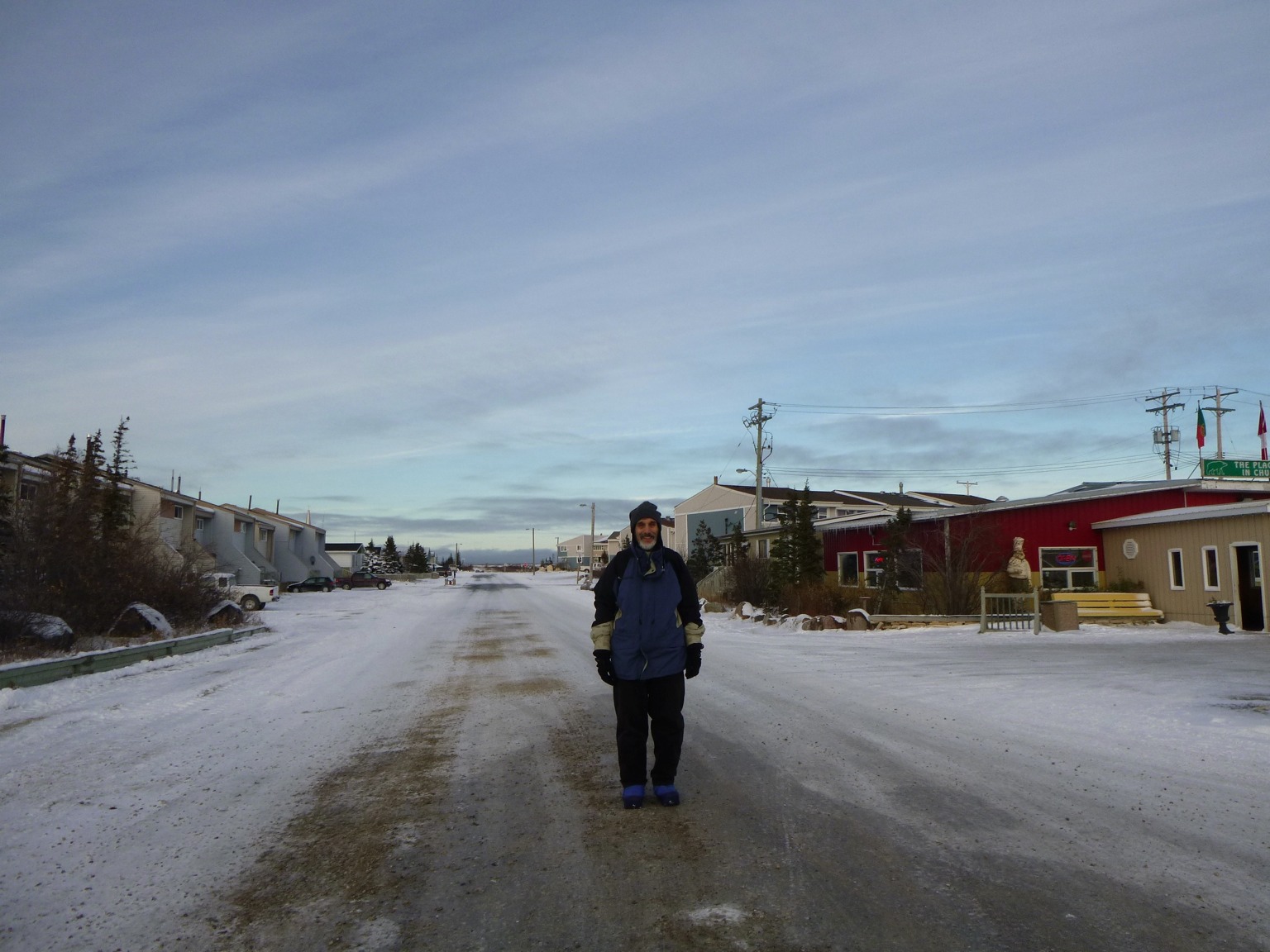 |
Churchill, Manitoba is
located at the mouth of the Churchill River as it enters
Hudson Bay, far to the north, near the Artic Circle in
Canada. Churchill calls itself the polar bear
capitol of the world since there is a high concentration
of bears every fall when the Churchill River
freezes. Given our good fortune to have seen many
wild animals in their natural setting we decided to
journey to this challenging location to see the polar
bears. It took two days and three plane flights to get to Churchill, with the last leg from Winnipeg Manitoba to Churchill on a propeller driven plane. Why a prop instead of a jet? The pilot said that all the run-ways north of Churchill were dirt and gravel, and jets would ingest this stuff and stop working. So, the 600 mile flight took almost three hours (and it seemed like five). |
| Downtown
Churchill
at rush hour (4:30 pm) |
 |
Before departing we
checked the weather regularly so that we'd be sure to
pack the right clothes. The forecast predicted
that the high would be about 30 degrees Fahrenheit and
the low about 29, and it wasn't off by much.
Fortunately we were able to dig out our clothes from our
Antarctic trip so stayed warm most of the time. As
you can see from the picture (on the left) taken from
our window, this was a good time to sit by the
fireplace.
|
 |
| Blizzard |
We arranged a package trip which included staying at a very nice lodge and then spending two days in a tundra crawler -- a double wide bus, about 6 feet off the ground, with a toilet and viewing deck. We spent nine hours a day for two days in the crawler, and we were crawling the walls by the end. When on the tundra we were not allowed off the crawler, and when our driver went off, he carried a gun for protection against the bears.
 |
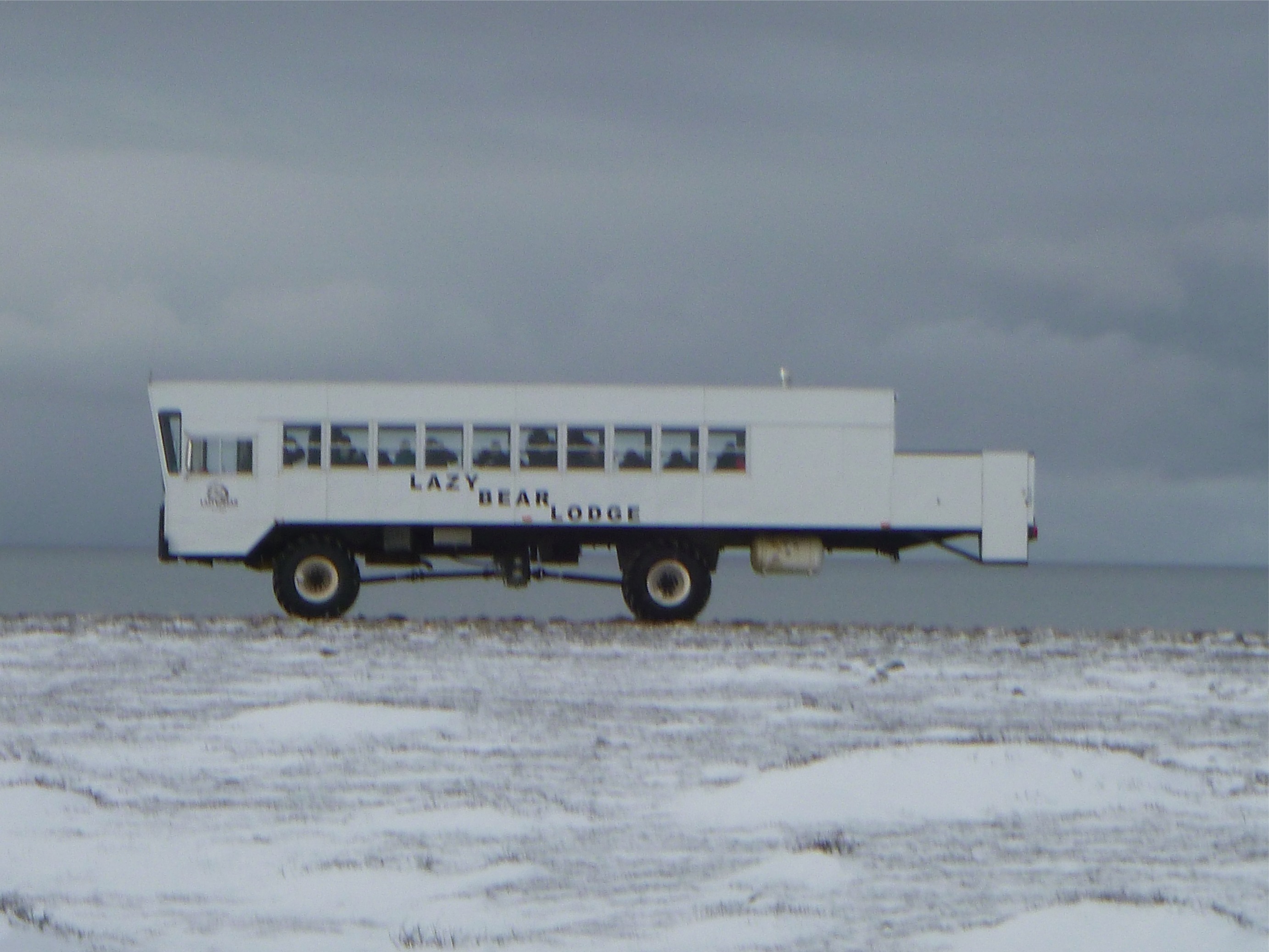 |
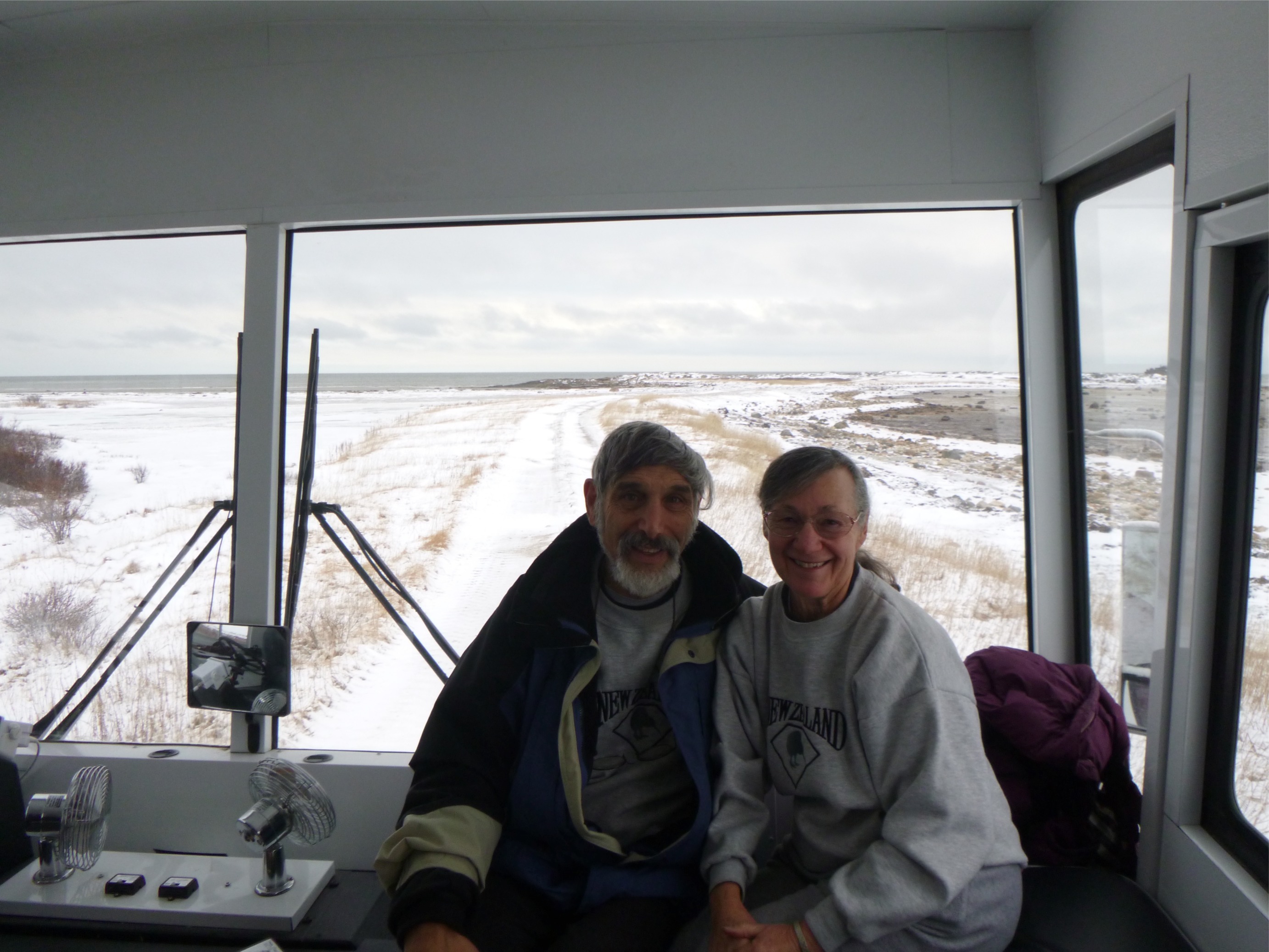 |
 |
Our search for bears took us to the Churchill Wildlife Management Area, a very large preserve south of the city and along the coast of the Hudson Bay. This is an area where the bears tend to congregate as they are waiting for the Bay to freeze. The area is relatively flat permafrost ground with a scattering of willow bushes and boreal forest with a spattering of spruce trees, ponds of varying sizes from a few feet across to a double football field, and greywacke rocks. The willow bushes reached a height of about six feet and are a favorite hiding place for the bears. The trees, with growth stunted from the harsh conditions, are very old. They grow about a couple of inches each year, so a 15 foot tree is easily 150 to 200 years old. And of course, they are all wind swept, with branches primarily on one side. Churchill graywack, as these flat rocks are called, is a dark gray to black color, and against the snow quite pronounced. It is a fascinating sedimentary stone as it was created in underwater avalanches and by strong submarine currents which carried and compacted the sediment. This is in contrast to the sedimentary rock which makes up the Grand Canyon, created by eons of inland seas washing and receeding from the Southwest region of the United States. | 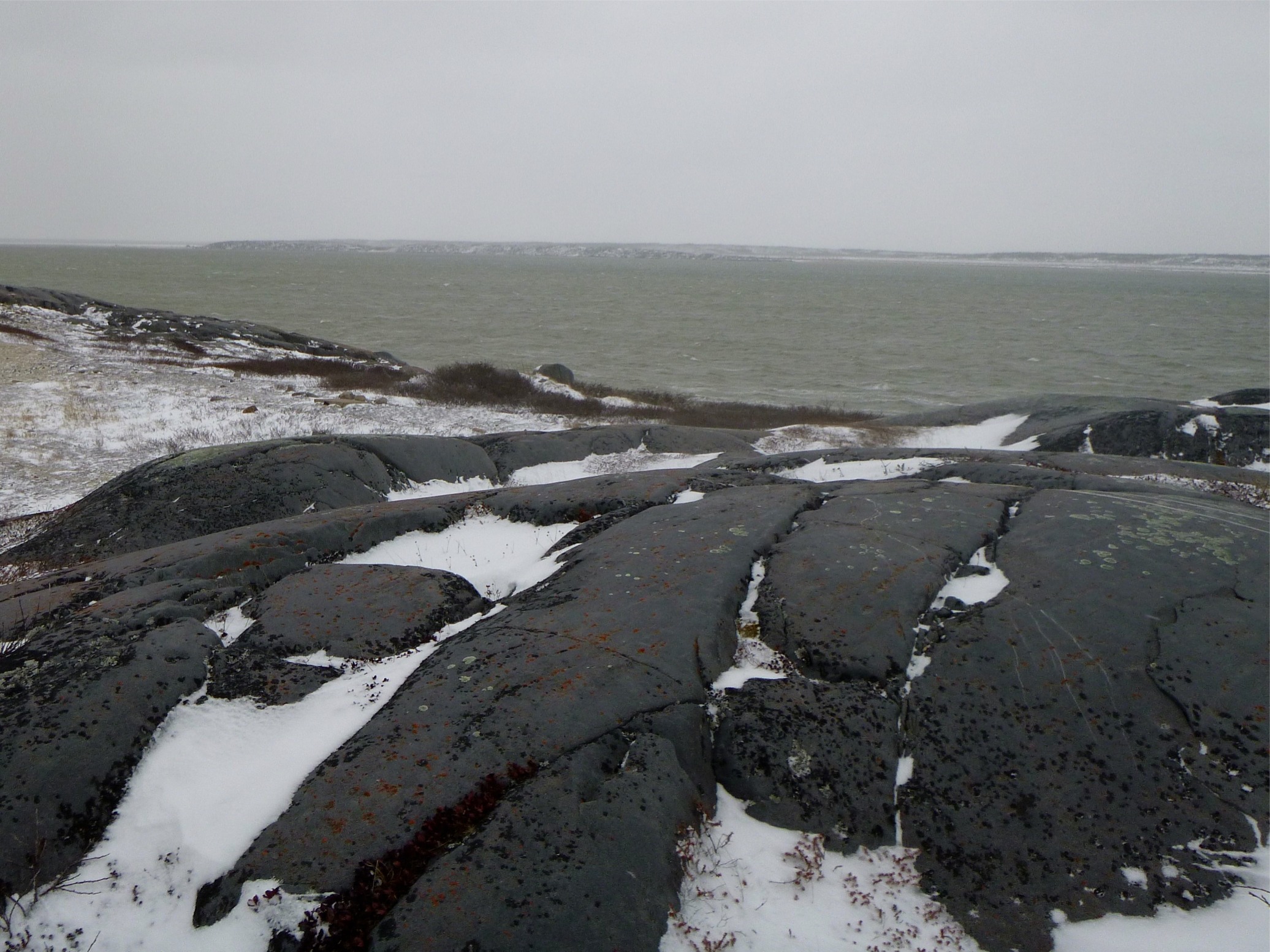 |
Enough of all this background, what about the bears? What bears? Actually, we were quite lucky. Our first day on the tundra the weather was nice (that is, clear) and we actually saw one microbear (that is a bear through a telescope a mile off), one minibear (that is a bear you can see with your naked eye, but is some distance off), and one real, actual full size polar bear within 100 yards of our (very safe) crawler. On our second day, with temperatures much colder and snow blowing most of the day, we saw one microbear. Note: micro- and mini- bear were terms which emerged from someone on our crawler with a dry sense of humor!
Pictures of the one and only bear we saw without magnification!
.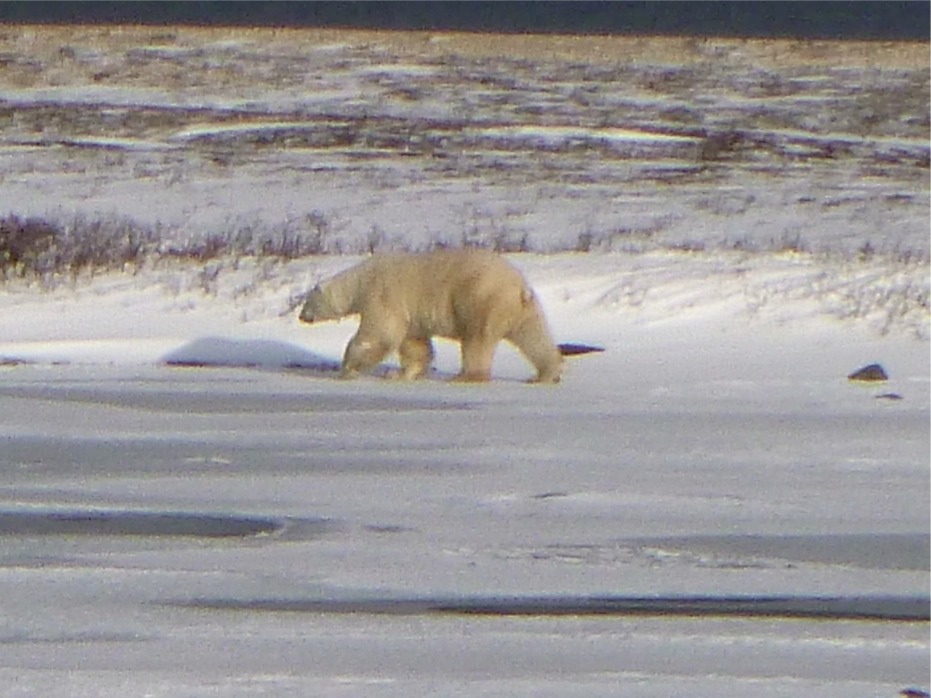 |
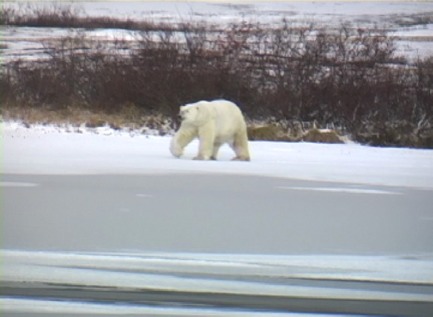 |
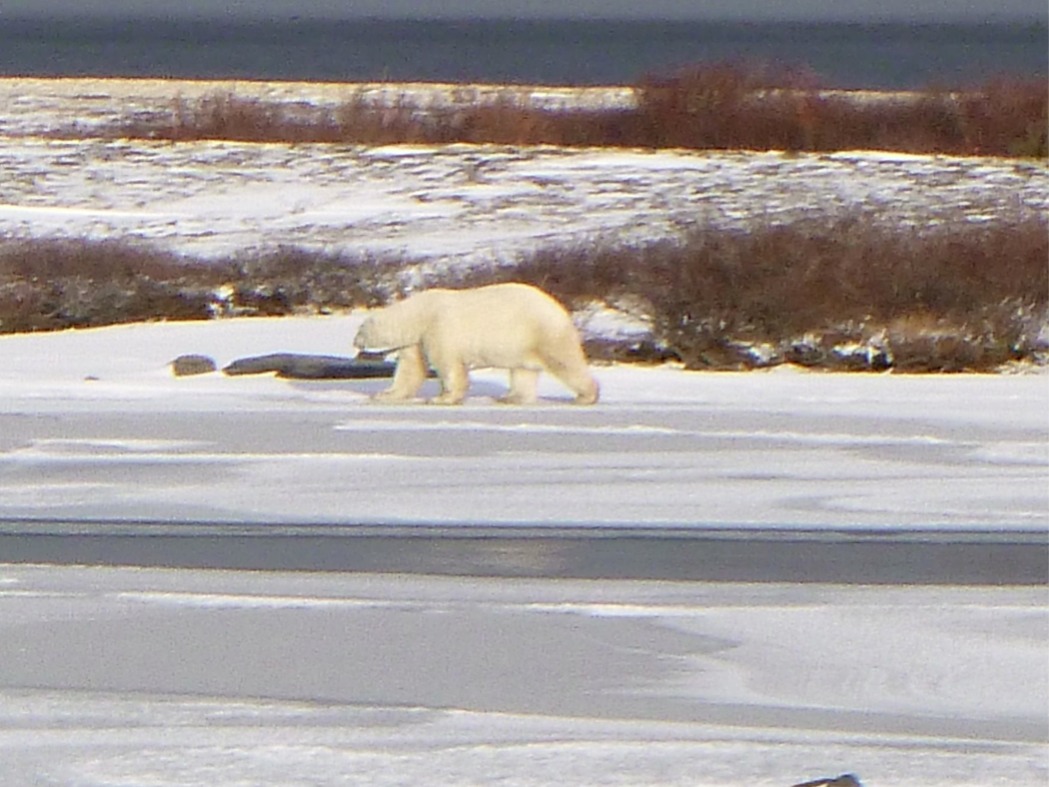 |
|
 |
 |
 |
|
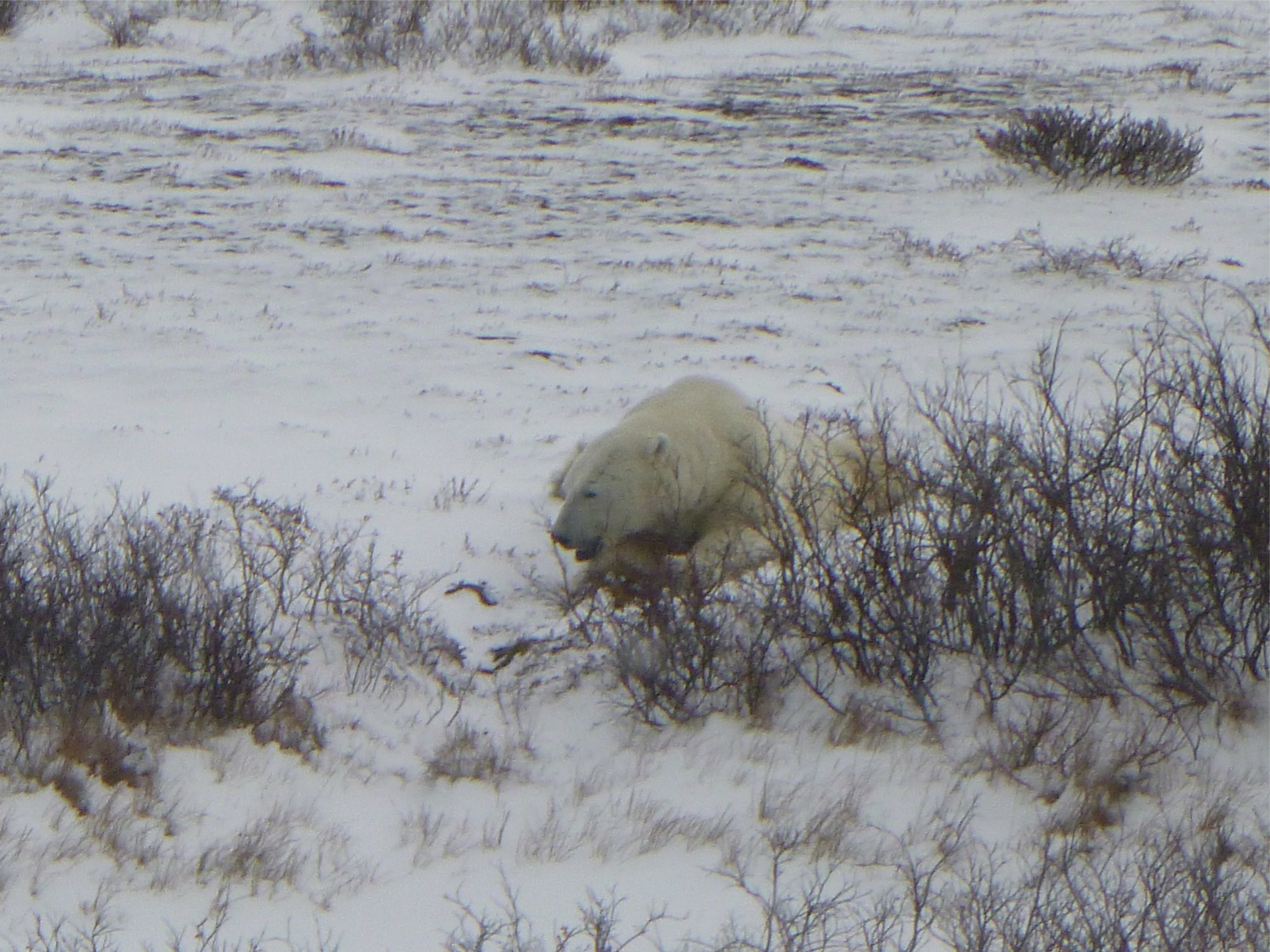 |
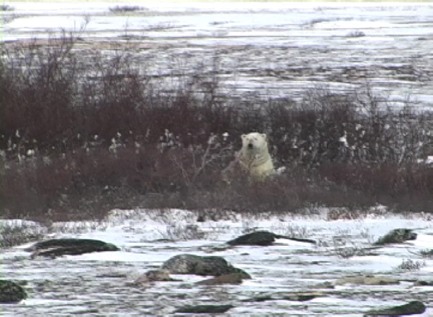 |
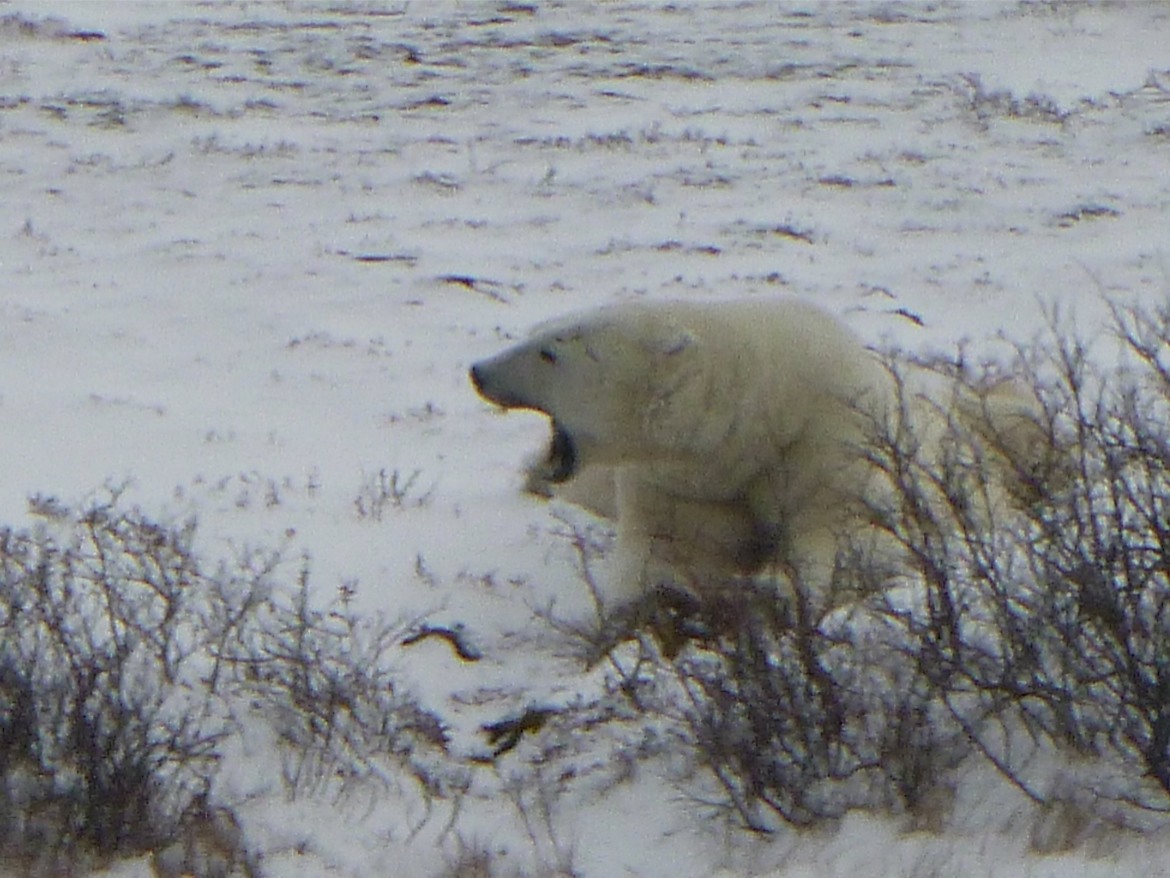 |
Regardless of the frustration of 18 hours on the crawler, our one close bear sighting was really very satisfying. Also, we learned a few interesting tidbits about these magnificent bears.
Polar boulders are rocks that look like bears. Bears spend a large amount of their time on land lying flat on their stomachs, spread-eagle style. This is to provide maximum contact with the cold ground to cool the bear off. For the bears, the colder the better! So, when looking for them from the crawler, most bear sightings turned out to be polar boulders.
An open questions debated by zoologists is whether the polar bear is a marine or a land mammal. Polar bears give birth to their young on land and spend most of their lives out of water. But, the definition of a marine mammal is an animal that relies on the ocean for its existence. Polar bears get essentially 100% of their food from riding on sea ice and eating seals. So, what is the answer: are they land or marine or both?
How do the polar bears catch the seals? The magic word is patience. Seals are marine mammals; they live and eat in the water, coming ashore to breed and give birth to their offspring. As mammals, seals must breathe air. In the winter, when the ice freezes, the seals make holes in the ice so that they can come to the surface to breathe. The bears lie down by a hole and wait. When the seals come up to breathe, the bear snatches it. Polar bears consume about 50 seals each season.
 |
Polar bears generally eat most of their food in the winter and have little or no food the rest of the year. So, bear encounters in the fall just before Hudson Bay freezes and the bears start their feeding season can be quite dangerous. In Churchill, people do not lock their cars so if a person is out walking and sees a bear, they can get into a car. For the children who like to swim at the beach, the ctiy has provided a safety boat. There is the polar bear jail for bears who wander into town and stay around. These bears are tranquilized, put in a holding facility (the jail), and then helicoptered out of town. |
|
Unlike so many of our
trips, this is not one where we came home and said "Wow,
what an adventure!" We were glad we were able to
go, but disappointed that didn't see more bears like the
one looking at us in this picture!
|
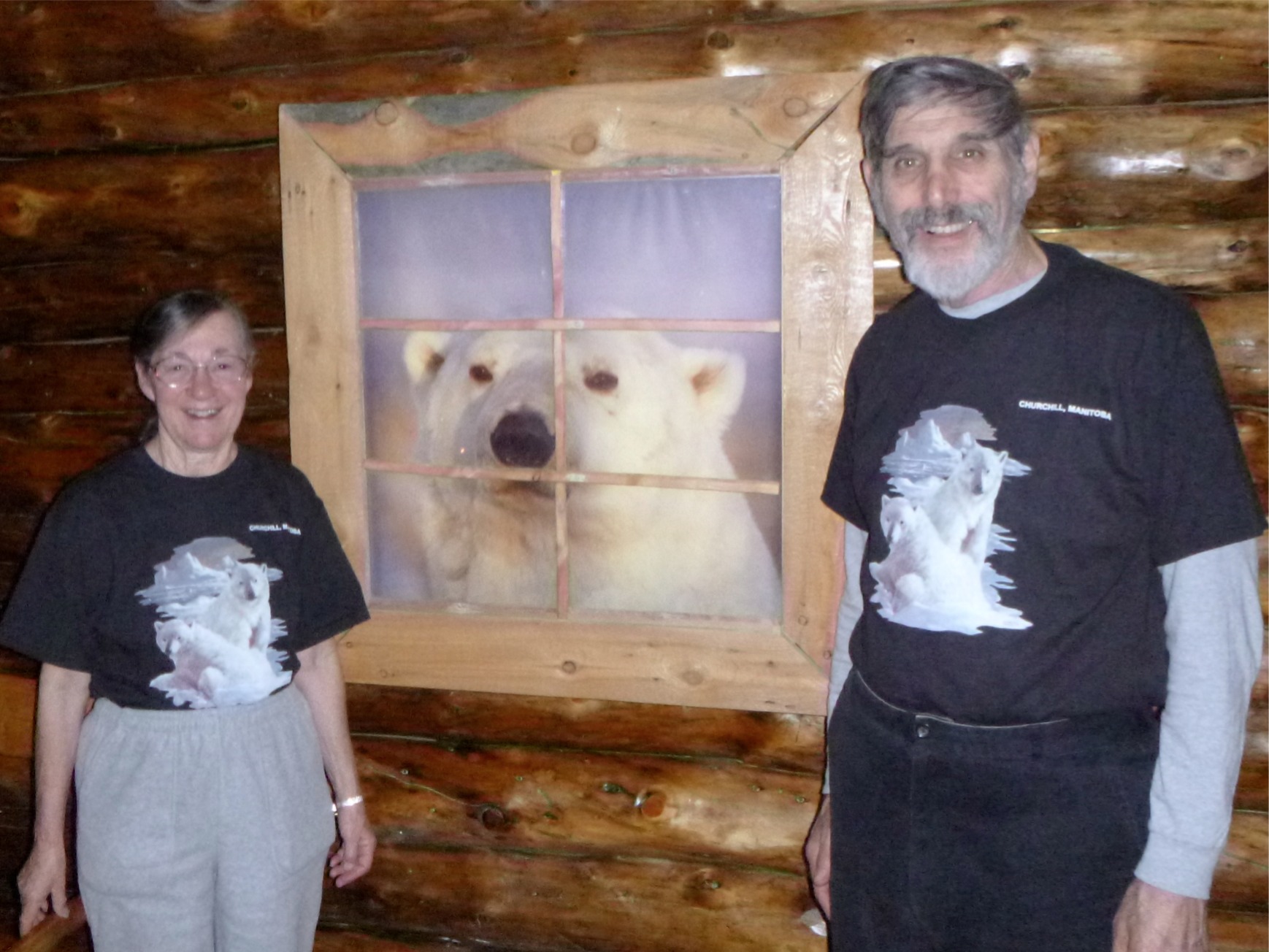 |
Photo journalist: Lois Frand
Writer: Jason Frand
Editor: Lois Frand
You can reach us via email at Jason or Lois November 24, 2013